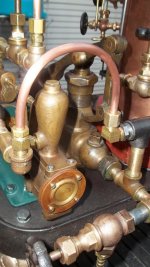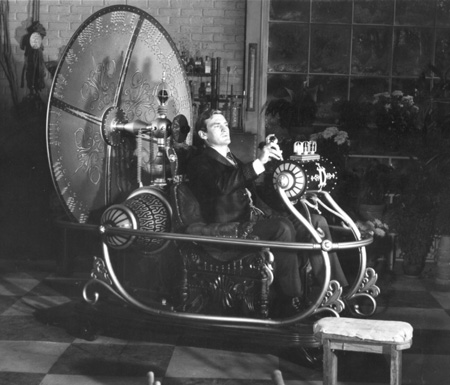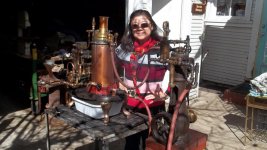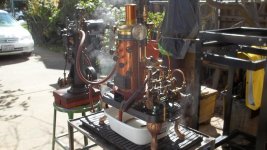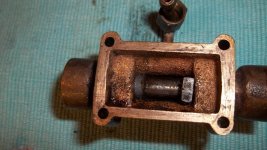Lester Bowman
Hot Rolled
- Joined
- Apr 9, 2011
- Location
- Modesto california USA
Here is a small steam boiler plant I've recently finished for use with my smaller steam engines. Actually what I've done is combined a few of the odd items I had laying around and combined them into an operable steam plant minus the steam engine.This way I can use it for different purposes.
Learning much about steam boilers from Joe Michaels I took this one slow and easy. This boiler is 6" in diameter standing about 20" to the top of the stack so it is a substantial boiler capable of running larger bore small steam engines at a slow speed.This is all I want it to do. Testing will be this weekend.
The boiler is a proper fire tube boiler with a gas burner in the firebox.It has been hydrostatically tested to 80 psi and will be operating at 35 psi.The smoke box was missing.If you look closely you will see an old pressure gauge case and bezel "I made do".
Two ways of water feed..a Simplex pump and a hand pump. I believe both are very old as well as the boiler. I dislike using compression fittings with steam ( it's a no no ) but toward the end my collection of small 1/8" npt fittings ran sparse. As a somewhat temporary measure I used a bit of new with the old.Eventually I hope to change these lines to match the Victorian look I was trying to achieve.
There is a bit more to do..a proper Displacement lubricator for the steam pump and some minor odds and ends.
Learning much about steam boilers from Joe Michaels I took this one slow and easy. This boiler is 6" in diameter standing about 20" to the top of the stack so it is a substantial boiler capable of running larger bore small steam engines at a slow speed.This is all I want it to do. Testing will be this weekend.
The boiler is a proper fire tube boiler with a gas burner in the firebox.It has been hydrostatically tested to 80 psi and will be operating at 35 psi.The smoke box was missing.If you look closely you will see an old pressure gauge case and bezel "I made do".
Two ways of water feed..a Simplex pump and a hand pump. I believe both are very old as well as the boiler. I dislike using compression fittings with steam ( it's a no no ) but toward the end my collection of small 1/8" npt fittings ran sparse. As a somewhat temporary measure I used a bit of new with the old.Eventually I hope to change these lines to match the Victorian look I was trying to achieve.
There is a bit more to do..a proper Displacement lubricator for the steam pump and some minor odds and ends.








